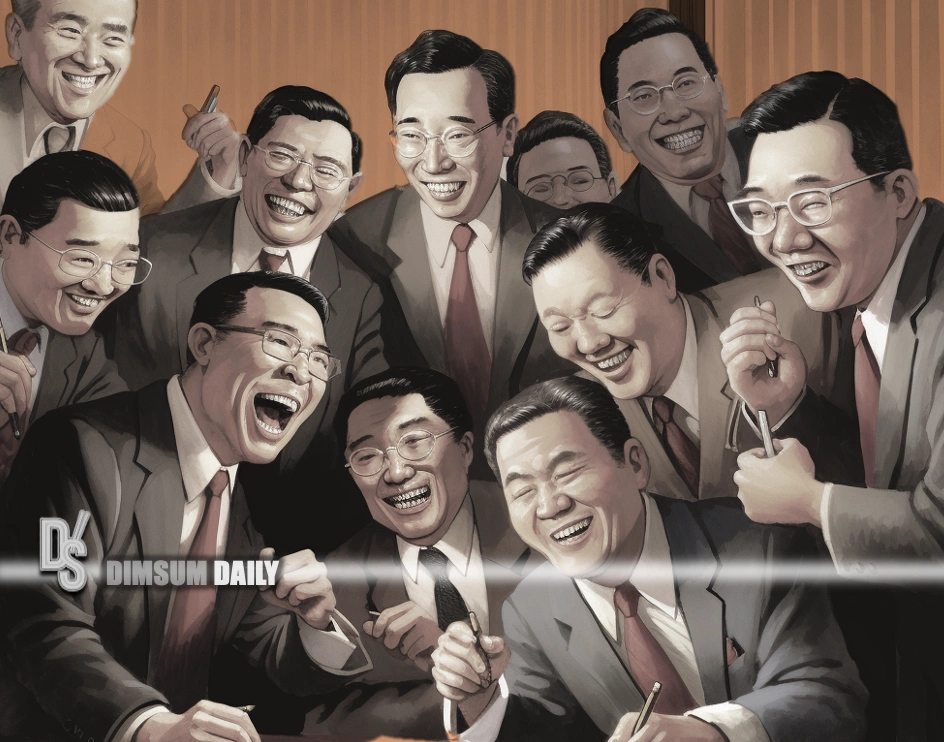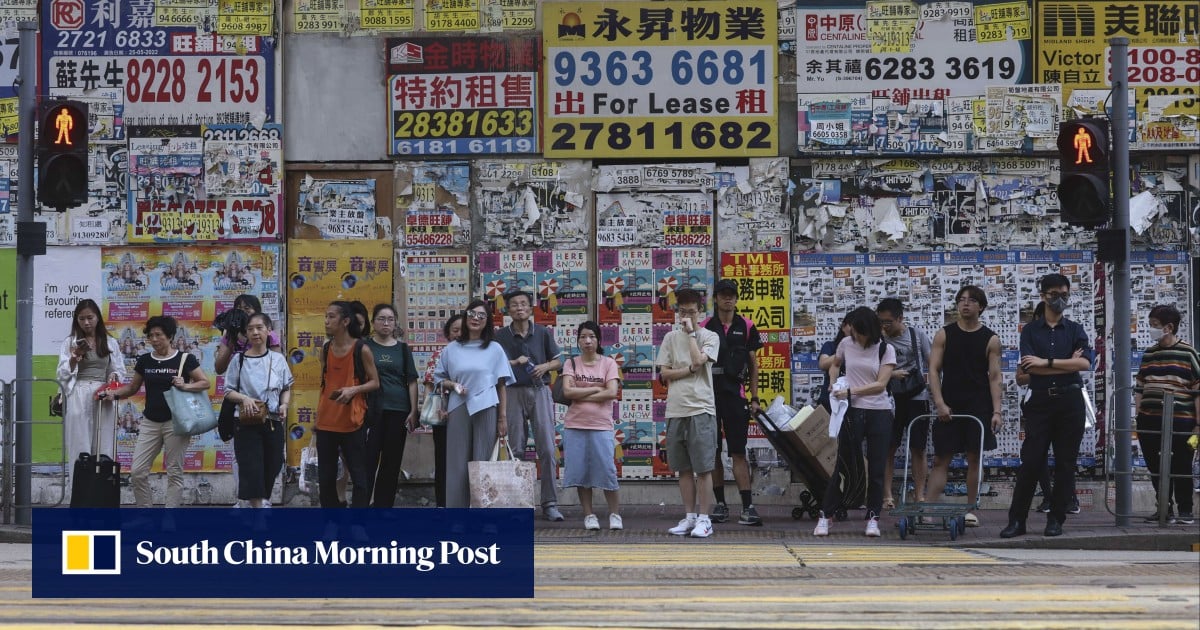27th June 2025 – (Hong Kong) Where sceptics once saw a Hong Kong market diminished by political uncertainty, a powerful convergence of geopolitical realignment, regulatory agility, and technological ambition has ignited an IPO boom of historic proportions. The numbers speak with thunderous clarity: a staggering 711% year-on-year surge in fundraising to HK$108.7 billion by mid-2025, catapulting Hong Kong past New York, Mumbai, and Riyadh to reclaim its throne as the world’s preeminent listing venue. This isn’t merely a recovery – it’s the emergence of a new financial architecture, one where Hong Kong transforms global tensions into competitive advantage while positioning itself at the vanguard of China’s technological sovereignty drive.
Consider the symbolic journey of Biren Technology, China’s brightest hope in the critical artificial intelligence chip arena. When Washington’s April export controls severed access to advanced Nvidia processors, Beijing responded with laser focus, directing state-backed funds from Guangdong and Shanghai to inject 1.5 billion yuan into the semiconductor challenger. Yet mainland exchanges, constrained by rigid profitability requirements, couldn’t accommodate Biren’s ambitious valuation amidst its necessary investment phase. Hong Kong’s pragmatic regulatory framework provided the solution, welcoming the loss-making innovator where Shanghai could not. This flexibility exemplifies Hong Kong’s newfound strategic purpose: serving as the indispensable bridge between China’s national priorities and global capital. Steven Sun of HSBC Qianhai Securities observes this dynamic extends far beyond tech, noting how Hong Kong’s unique position resolves the valuation gap and regulatory complexities facing ambitious Chinese enterprises.
Geopolitical friction under Washington’s renewed trade offensive has paradoxically cemented Hong Kong’s supremacy. As U.S. listings by Chinese firms plummet toward a decade-low $841 million – throttled by stringent Nasdaq requirements and delisting anxieties – Hong Kong has become the uncontested sanctuary for China’s corporate champions. Donald Trump’s “Liberation Day” tariffs, intended to isolate Chinese industry, inadvertently supercharged Hong Kong’s appeal. Global institutions now view the city as the singular “geofenced zone” where China exposure aligns with international standards and legal predictability. When Contemporary Amperex Technology (CATL) launched its record-shattering $5.25 billion secondary listing in May, European pension funds and Middle Eastern sovereign wealth participated enthusiastically – capital that would never touch a Shanghai offering. Hong Kong’s genius lies in offering unfiltered access to China’s growth narrative while insulating investors from mainland regulatory unpredictability.
Simultaneously, a generational wealth transfer is electrifying Hong Kong’s grassroots investment landscape. As property values languish 30% below their 2021 peak, the IPO market has delivered astonishing average returns of 35%, creating a powerful behavioural shift. Retail investors like Mark Yue, a 36-year-old fintech analyst, exemplify this transformation. Leveraging margin financing up to ten times his principal, Yue has captured consistent gains by targeting marquee listings like CATL and beverage giant Mixue Group, selling on debut for reliable double-digit pops. “Why chase diminishing property yields when IPOs offer strategic, calculable returns?” Yue reasons. The Hong Kong Monetary Authority’s tacit encouragement of this retail participation – contrasting sharply with mainland crackdowns on speculation – has created a virtuous cycle. Overwhelming subscription demand, like the HK$380 billion flood for CATL’s offering, generates explosive first-day performances that in turn lure institutional capital. Few global asset classes currently rival this dynamism – gold’s haven appeal has delivered 27% gains, while even the resurgent Hang Seng Index trails at 21%.
The structural backbone of this boom lies in Hong Kong’s mastery of the secondary listing surge. Fully 95% of 2025’s listings represent Mainland enterprises seeking dual listings, with eight successfully launched by June alone. This isn’t retreat – it’s strategic expansion. Companies like soy sauce titan Foshan Haitian raise international capital here precisely to accelerate global ambitions, as Chairwoman Cheng Xue declared during her ringing of the exchange bell. Hong Kong’s efficiency is paramount: it clears jumbo offerings in weeks while Shanghai’s backlog stretches months. EY’s Ringo Choi captures the operational reality: “Instead of spending a hundred hours courting one foreign issuer, we onboard ten Chinese champions in the same time.” The proof resonates in deals like Midea Group’s $3.98 billion offering last year, which succeeded without Western participation – demonstrating Hong Kong’s capacity to mobilise colossal liquidity within Greater China’s ecosystem. For CFOs navigating geopolitical headwinds, Hong Kong solves multiple challenges: accessing deeper pools of capital than Shenzhen, signalling global aspirations, and sidestepping the sanctions targeting firms like Biren partner China Mobile.
The runway ahead gleams with promise. Deloitte’s upgraded forecast of HK$200 billion in annual fundraising appears almost conservative against the backdrop of 160 companies now queued in Hong Kong’s IPO pipeline – double December’s count. Semiconductor innovators following Biren’s path will dominate this wave, drawn by Morgan Stanley’s projection of a 287 billion yuan domestic GPU market by 2027. The imminent “Tech Pioneer Board,” fast-tracking pre-revenue AI and biotech firms, will formalise Hong Kong’s structural advantage over mainland rivals. Potential game-changers shimmer on the horizon: whispers of Ant Group’s return, ByteDance seeking refuge should Washington force a TikTok divestment, and US-listed giants securing dual-primary listings. Critics dismissing this as a “China ghetto” profoundly misread the market’s evolution. Hong Kong now concentrates precisely where global capital demands exposure: China’s ascendant innovation economy, from AI chips to battery technology.
This resurgence signals a fundamental fracturing of global finance. Much like Moscow’s exile birthed Dubai’s commodity ascendancy, Wall Street’s retreat from Chinese equity has forged Hong Kong’s capital markets hegemony. The city thrives not despite U.S.-China tensions, but by uniquely monetising them. When CATL’s prospectus devoted 43 pages to tariff risks, investors oversubscribed 18-fold – recognising Hong Kong’s hybrid resilience: British legal certainty fused with Chinese liquidity and ASEAN’s growth narrative. As Biren’s founders prepare to ring the bell this August, they embody Hong Kong’s next chapter. Their BR100 chip – designed to circumvent Nvidia restrictions – now powers Shanghai’s AI labs, just as Hong Kong transforms geopolitical constraints into competitive supremacy.


